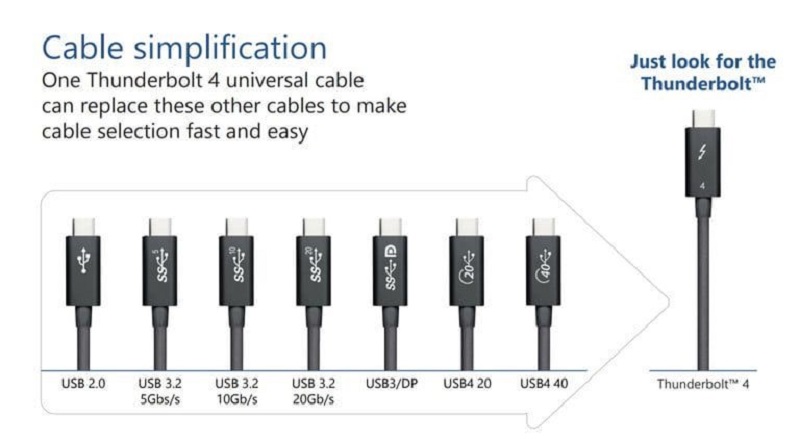
While the world is still trying figure out exactly how all the confusing USB 3.0 specifications work, fresh news from Intel on its upcoming Thunderbolt 4 connection standard has popped up regarding the USB 4.0 that’s on the horizon. Unlike jumps in speed between previous Thunderbolt standards, the jump from 3.0 to 4.0 won’t be too massive, with the new standard supporting a speed of up to 40 Gbps. It’s Intel’s other improvements around high video and data requirements, and support for multi-port hubs, that is perhaps most interesting.
Computers making use of the new Thunderport 4 will be able to support either two 4K displays or one 8K display, along with PCIe data transfer speeds of up to 32 Gbps, all double the previous minimum requirements from Thunderbolt 3. The new standard will also allow for new docks and monitors with up to four Thunderbolt 4 ports, also double the previous standard and meaning that people who will purchase new laptops with this standard will finally be able to use more monitors and other devices at the same time. A big constraint on many laptops utilising the standards currently available.
This also comes with stricter rules for manufacturers using them. Laptops that require less than 100W of power to charge will be required to offer Thunderbolt 4-based USB-C charging on at least one port, and Thunderbolt 4 laptops are required to be able to be woken up from sleep mode through a keyboard or mouse connected through a Thunderbolt dock. For the record, Intel doesn’t charge any fees for the use of their specification, so this is also something that is positive for manufacturers.
With the USB Implementers Forum looking to unveil the specifications for the new USB 4.0 standard that is aimed at clearing up all the confusion around the complicated USB 3.0 standards, Intel has perhaps played it well in unveiling their hand first and getting manufacturers interested in utilising their technology first. I personally don’t mind which standard proves more popular, as long as manufacturers can perhaps find a way to support both to just make it easier on people who have to constantly stock up on new adapters to work between them all.
Last Updated: July 13, 2020




















